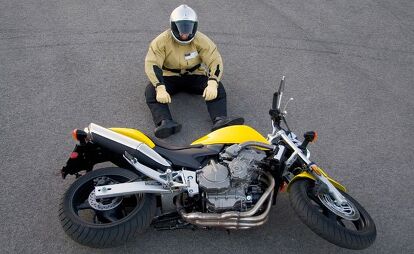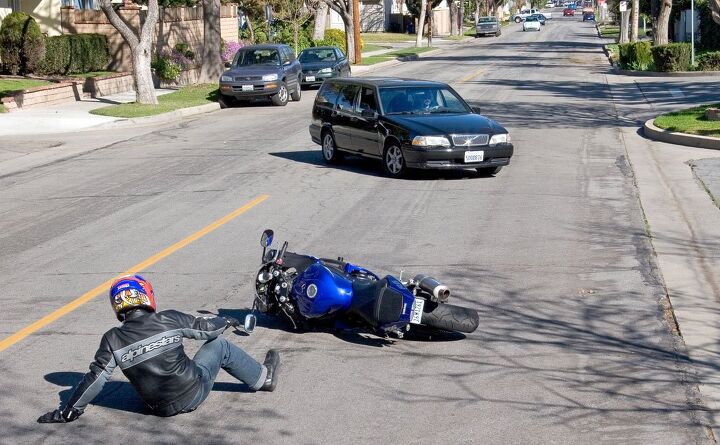Always Learning – Editorial

I’ve never been much for team sports. Instead, I’ve always been attracted to more solitary pursuits: skiing, bicycling, running, and, most importantly, motorcycling. When I consider this bent, the common thread I unravel is the constant opportunity for self-reflection and learning that these activities allow.
First, there’s the initial learning curve, which with motorcycling is particularly steep. You’re performing five separate activities with your four appendages, and all of those tasks require a good bit of finesse to master by themselves.
So, while you can go the self-taught route, in order to maximize your enjoyment and, yes, longevity, formal training or, at least, active study of motorcycling is necessary. I’ll admit I’m biased; I’m a product of the MSF’s Rider Education Program (having never traveled an untrained mile on the street) and was a certified motorcycle safety instructor for five years. I’ve also taken numerous track-based riding courses and have been fortunate enough to ride with some extraordinary riders – which if you are coachable, like me, is invaluable in advancing your technique.
Before I bought my first motorcycle, I completed the MSF Riding and Street Skills (now Basic Rider Course). I remember how – in those heady, early days of riding – just starting my bike’s engine gave me goose bumps. As a new rider, encountering unfamiliar situations would also provoke a strong reaction – usually an adrenaline rush after I’d survived the incident.
Those rides provided me with ample opportunities to learn from my mistakes and refine my riding technique. After my rides, I would sit and contemplate any situations I’d encountered. I celebrated successful panic stops and swerves around obstacles. I considered how I could have handled dicey moments differently. Each time, I mentally thanked the MSF instructors who had taken me to task and pushed me to improve my skills during the two days of range riding. Even though I was actively reading all that I could about motorcade safety, I seriously doubt that I could have taught myself these necessary survival skills.
However, all this focus on technique and theory doesn’t guarantee that you’re going to escape being a statistic. Before the end of my first year of riding, after clocking almost 30,000 miles (including an 11,000-mile, three-month long, cross-country trip from New York to Los Angeles), I totaled my bike in a high-speed crash on the Angeles Crest Highway. The day after the accident, I was up in the corner figuring out what I’d done to cause my front end to wash mid-corner. (The answer: I carried a slightly tighter line than usual and found some sand at the apex.)
One important technique to employ if you want to learn from mistakes is to not make excuses. I didn’t blame the bad luck of hitting sand in a corner for my crash. Instead, I owned up to the fact that I was the one responsible for the tightness of the line and failing to notice that the shape of the banking of the corner could cause sand to naturally collect at the apex.
You can apply this to almost any situation. Did a car change lanes on you? What could you have done to increase your visibility or space cushioning? A piece of wood suddenly appears from under the car in front of you, giving you no option but to ride over it? Increase your following distance or change your lane positioning so that you can see further ahead. By looking to yourself rather than fate or the other driver (even if the bonehead move really was their fault) you provide yourself with an opportunity for bettering your riding.
Still, looking back at past rides only goes so far. I also test everything I read in order to decide how to incorporate it into my riding. Read an article about a technique? Immediately go out and practice it. Once, a non-riding friend followed me home in his car as I was puzzling over a new lane positioning idea. He later asked me why I was weaving all around in my lane as we worked our way through Phoenix evening traffic. When I told him I was testing a new riding technique and explained its purpose, his reply was, “Really? I just try to keep my car between the lines.”
Sometimes trying something new will make your riding worse before it gets better. Give it a chance, and you’ll reap the benefits. When I decided to ride with two fingers on the front brake at all times in an effort to shorten my reaction time, I remember how my brake application and downshifts became balky – even embarrassing. Over the first couple of days, I was tempted to go back to my old method because it was easier and more familiar. Gradually, over the next week, the technique began to feel less awkward.
Then one afternoon on my way home from work, it happened. Magically, as if I’d become double-jointed in the fingers of my right hand, I could upshift and downshift smoothly, like I’d been doing it forever. I headed to the mountains to celebrate. I then began to experience the myriad of ways that the throttle and brake can be utilized simultaneously – a study that continues to this day, over 20 years later.
Every ride contains moments that point to refinements of techniques or development of new approaches to riding – for experts as well as beginners. In fact, I’d be willing to bet that one of the characteristics that separate experts from the average rider is reflection on riding situations and techniques. Engage your brain before you release your clutch, and you’ll ride further, longer, safer, and, yes, faster. Make the commitment today to reaffirm your focus on rider education. You’ve got everything to gain and nothing to lose.

Like most of the best happenings in his life, Evans stumbled into his motojournalism career. While on his way to a planned life in academia, he applied for a job at a motorcycle magazine, thinking he’d get the opportunity to write some freelance articles. Instead, he was offered a full-time job in which he discovered he could actually get paid to ride other people’s motorcycles – and he’s never looked back. Over the 25 years he’s been in the motorcycle industry, Evans has written two books, 101 Sportbike Performance Projects and How to Modify Your Metric Cruiser, and has ridden just about every production motorcycle manufactured. Evans has a deep love of motorcycles and believes they are a force for good in the world.
More by Evans Brasfield



































Comments
Join the conversation
After nearly fifty years in the saddle (MSF-trained late in life, but it was useful) I believe the best teacher is the thing you're sitting on. Practice, practice, practice. Especially alone. Become one with the machine you own.
I learned the basics in school and it took me a year of practice to be comfortable in using them.